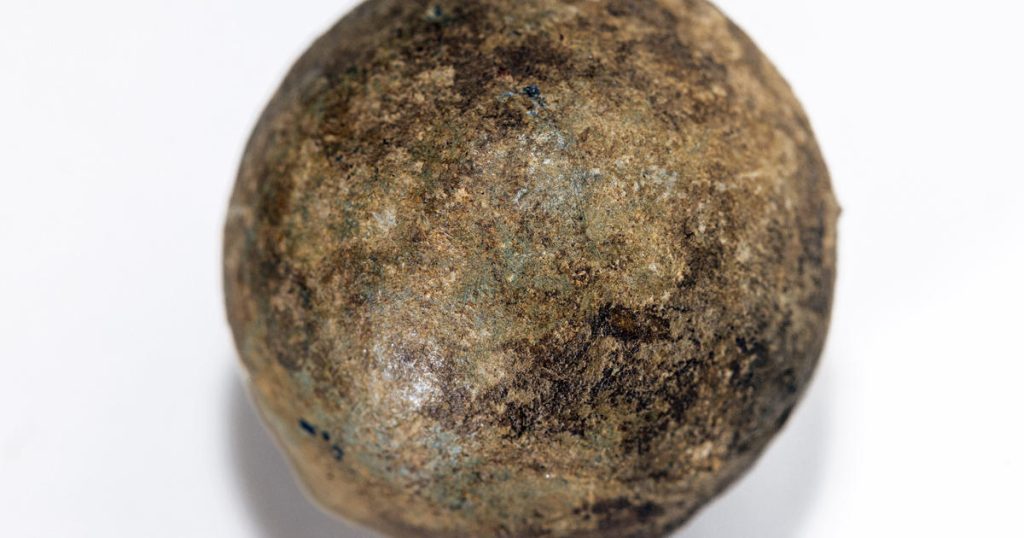Archaeologists in Virginia have discovered what is believed to be the remains of a military barracks from the Revolutionary War on the property of Colonial Williamsburg. The site includes chimney bricks and musket balls that have been indented with soldiers’ teeth, as well as bits of pottery and jewelry that were commonly worn by high-ranking officers. Maps and documents reference a barracks built between 1776 and 1777 for the Continental Army, with the structure designed to accommodate up to 2,000 soldiers and 100 horses.
The American Revolution began in 1775, and the barracks are thought to have been destroyed in 1781 by troops in the army of British Gen. Lord Charles Cornwallis as they made their way to the Battle of Yorktown. Archaeological evidence of continental barracks in Virginia is rare, making this site particularly valuable because it was used solely as a barracks and a significant portion of the land has remained largely undisturbed. The initial excavation last summer revealed chimney bases, a military buckle, and lead shot for muskets, with soldiers believed to have chewed on the balls for their sweet taste.
The site was discovered during an archaeological dig required ahead of the construction of a proposed regional sports complex. The footprint of the complex has been shifted to preserve the historical site. Only a small percentage of the site has been excavated, but the museum plans to use it to tell the story of Williamsburg’s military involvement in the American Revolution and the everyday lives of soldiers. Additionally, Colonial Williamsburg archaeologists have uncovered a 17th-century house with plaster, high-end ceramics, and a silver teaspoon handle, providing valuable insights into life before the founding of Williamsburg.
Colonial Williamsburg’s executive director of archaeology described the findings as significant for understanding the history of the area. The museum aims to use the discovered relics to tell the story of life during different time periods in Williamsburg before and after its founding. The excavation of the military barracks and the 17th-century house provide valuable insights into the lives of soldiers during the American Revolution and the lifestyle of early settlers in the region. The artifacts unearthed, including chimney bricks, musket balls, pottery, and high-end ceramics, offer a glimpse into the daily lives, routines, and hardships faced by individuals during these historical periods.
The discovered relics, including musket balls indented with soldiers’ teeth and the remnants of a high-ranking officer’s jewelry, paint a vivid picture of the past and provide historians with valuable information about the lifestyles and experiences of those who lived during the American Revolution and the colonial period. The rare finding of a continental barracks in Virginia adds to the significance of the site and offers a unique opportunity to explore a lesser-known aspect of history. With ongoing excavations and discoveries, Colonial Williamsburg continues to uncover the rich historical tapestry of the region, shedding light on the lives of soldiers and settlers who lived there centuries ago. Through these archaeological finds, researchers hope to piece together a more comprehensive understanding of the past and share it with visitors to the living history museum.


